Breaking The Bank: Ranking Early Extensions For The 2013 NBA Draft Class
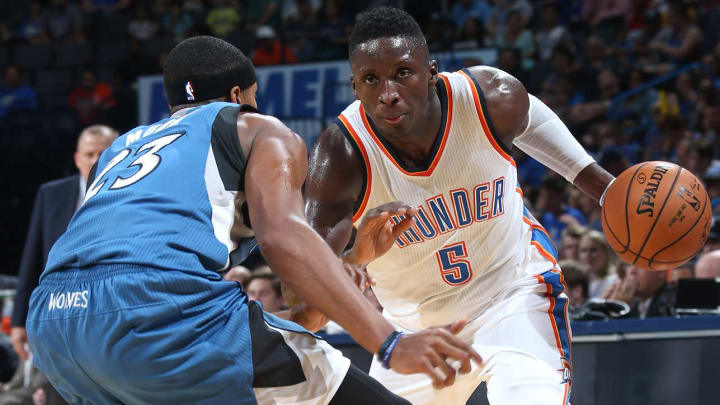
Despite producing one of the weakest Rookie of the Year races in years and garnering a grand total of zero All-Star selections to date, the 2013 NBA Draft class managed to haul in $682 million worth of rookie contract extensions prior to Monday night’s deadline.
All told, eight members of the 2013 class, earned extensions that will kick in for the 2017-18 season. The size of those deals, headlined by nine-figure agreements for CJ McCollum, Rudy Gobert, Giannis Antetokounmpo and Steven Adams, reflect a healthy economic environment that has seen the NBA’s salary cap rise from $70 million in 2015-16 to $94.1 million in 2016-17 to a projected $103 million in 2017-18.
Here’s a rundown of this year’s eight early extensions ranked from best to worst, with a look back at comparable deals from years past.
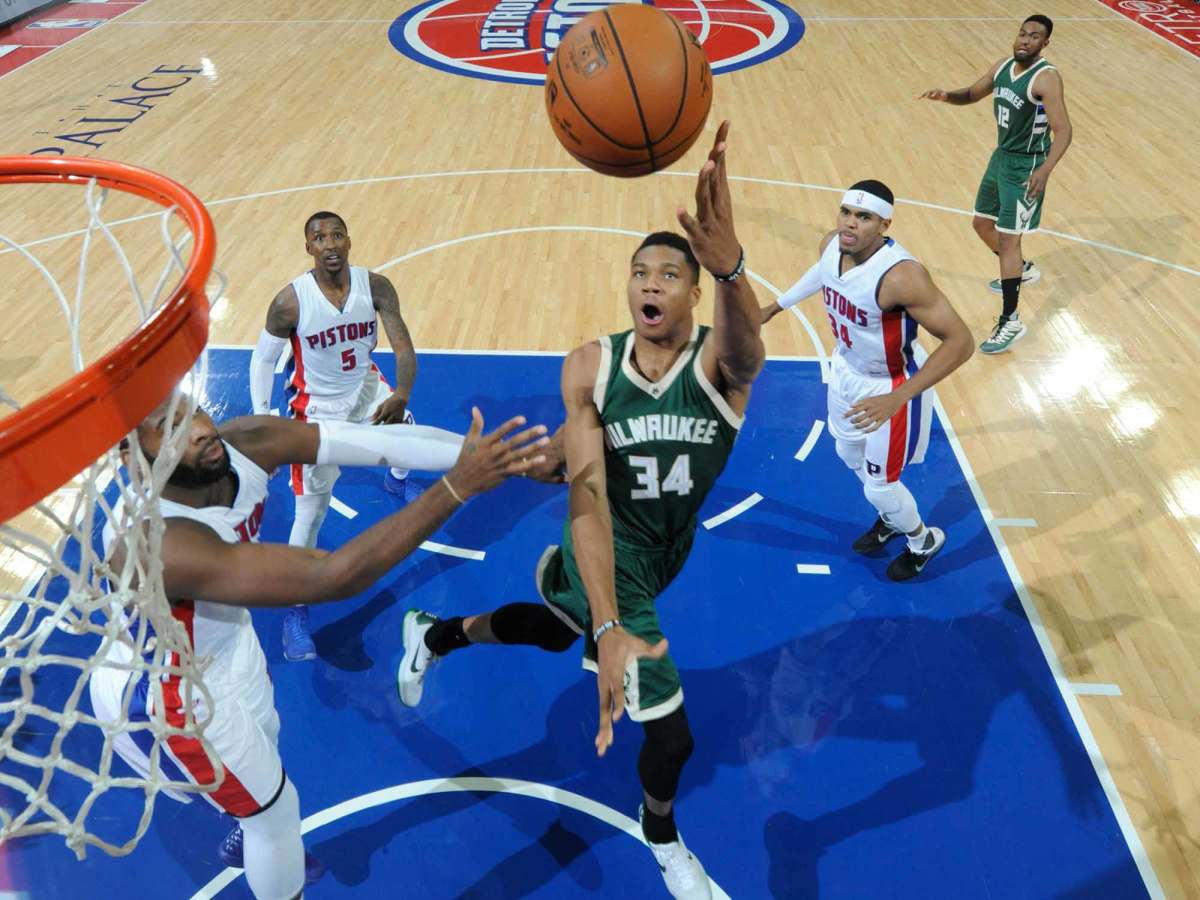
1. Giannis Antetokounmpo, Bucks: 4 years, $100 million
Best recent comparison: Paul George’s 5-year, $92 million extension in 2013
The No. 15 pick in 2013 is the odds-on favorite to become the class’s first All-Star, perhaps as soon as February in New Orleans. Still just 21 and clearly Milwaukee’s top long-term asset, Antetokounmpo did the Bucks a huge favor by agreeing to these terms rather than pushing for a five-year, $138 million max extension. When ceiling, health, role and all-around skill level are taken into consideration, the best recent positional comparison point is George, who cashed in max money three years ago. Although Antetokounmpo obviously lacks George’s shot-making and range, there are similarities: both possess elite athletic tools, both make two-way contributions, and both have the personality to handle the responsibilities that come with being a franchise player.
The Bucks’ front office has made more than its fair share of mistakes in recent years (Michael Carter-Williams, Larry Sanders, Greivis Vasquez, J.J. Redick), but this extension wasn’t one of them. Antetokounmpo could very well be a five-time All-Star by the time this deal runs its course, and he will almost certainly stand among the NBA’s best star values in two years. Milwaukee still has loads of questions to address with its roster and direction, but it managed to answer the biggest one during the off-season summer in impressive fashion.
SI.com's Top 100 NBA players of 2017
2. CJ McCollum, Blazers: 4 years, $106 million
Best recent comparison: Klay Thompson’s 4-year, $70 million extension in 2014
While the Blazers didn’t exactly squeeze out the nickels and pennies in this negotiation, or any of their major offseason moves for that matter, they can feel quite good about this investment. Last season, McCollum shook off past injury issues to earn Most Improved Player honors, establishing himself as one of the better scorers at the two guard position. Portland can justify this premium price by pointing to McCollum’s fit: He’s a natural second fiddle to franchise star Damian Lillard, as the two guards share strong chemistry on and off the court, and his scoring-minded playmaking is deployed to full effect in coach Terry Stotts’ attack. Although the 25-year-old McCollum is the second-oldest player from this class to receive an early extension, that works well from a timeline perspective, as Portland now has the Lillard/McCollum duo locked in through their age-30 and age-29 seasons, respectively. The Blazers still need some additional frontcourt help to fully get over the hump and join the West’s elite, but at least they’ve bought themselves plenty of time.
On a proportional basis, McCollum’s deal is very, very similar to the contract signed by Thompson two years ago. At the time, Thompson hadn’t yet earned an All-Star selection or advanced to the conference finals, and he was still fighting his way into the “best players at his position” conversation. McCollum might not be in for the same meteoric rise as Thompson, and he’s certainly not the same impact-maker on the defensive end. Still, hindsight should treat the McCollum move favorably, just like it has the Thompson signing. As a footnote, agreeing early with McCollum also preempted any potential locker room issues or totem pole questions that could have resulted this season following eye-popping offseason commitments to back-up guards Evan Turner and Allen Crabbe.
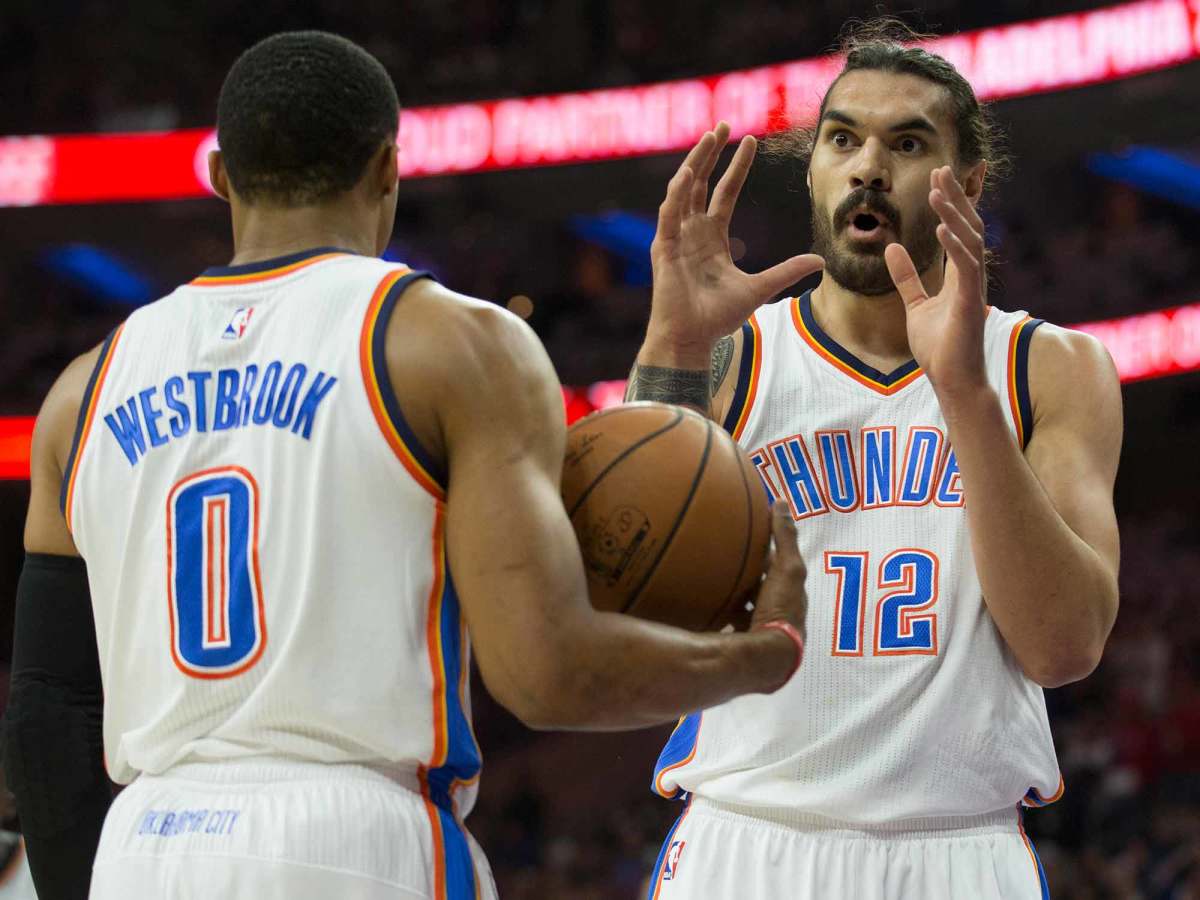
3. Steven Adams, Thunder: 4 years, $100 million
Best recent comparison: DeMarcus Cousins’ 4-year, $62 million extension in 2013
The center position has gone through an evolution in recent years, with isolation scorers and steadfast rim-protectors giving way, in many cases, to smaller, more mobile interior players who take a backseat on offense. Adams, 23, looks like the type of center who will remain a difference-maker no matter how the game changes over the next half-decade. As big as this number is, Adams projects as a very safe investment: he’s big and strong, he’s enjoyed good health, he plays incredibly hard, he blocks shots and grabs offensive rebounds, he finishes efficiently, he pairs well enough with Russell Westbrook, and he has found a home in small-market Oklahoma City. During the 2016 playoffs, he showed that he could bang with the Spurs when they played big and keep up with the Warriors when they went small.
Although individual awards are hard to come by in the West, Adams has a shot at garnering All-Star selections or All-NBA nods down the road. After all, Karl-Anthony Towns and Anthony Davis are the only under-25 bigs in the conference with more all-around talent right now. On a proportional basis, Adams’s contract with the Thunder is almost identical to the deal signed by Cousins three years ago. That deal, of course, has aged very well. This one should too, even if Adams lacks the offensive toolbox and ball-handling ability to be a number one option like Cousins. After losing Kevin Durant and trading Serge Ibaka this summer, Oklahoma City was clearly in position to pay whatever it took to keep Adams in place as a core piece. The final damage easily could have been worse.
Russell Westbrook: 'I Was Never Going To Leave'
4. Rudy Gobert, Jazz: 4 years, $102 million
Best recent comparison: DeMarcus Cousins’ 4-year, $62 million extension in 2013
Lining up right alongside Adams is Gobert, which feels appropriate given that the two centers make for an intriguing contrast. Through three years, Adams has enjoyed slow and steady progress that culminated in a strong 2016 postseason run, while Gobert has taken the “fits and starts” approach to development and has yet to see the playoffs. When it comes to dependability and versatility, Adams is the pick. In terms of pure ceiling, though, Gobert still has the edge thanks to his extraordinary defensive impact and wingspan. Jazz fans are right to believe he can carry an elite defense by himself and Gobert, unlike Adams, will likely be his team’s most indispensable player for a majority of this extension.
The early agreement prevents Gobert from pulling in a max offer sheet next summer and it sets Utah’s multi-year path and style in stone, much like Indiana’s 2012 agreement with Roy Hibbert. To Gordon Hayward and George Hill, the Jazz’s key 2017 free agents, the move is further evidence that GM Dennis Lindsey is bullish on a core that is still finding its way. While Gobert is something like an anti-Cousins, given a somewhat rigid and limited offensive game that is largely predicated on dunks, he has the potential to lead a top-five defense and to be a perennial Defensive Player of the Year candidate throughout this deal. That’s worth Cousins-like money, especially if Lindsey and coach Quin Snyder can make full use of his talents by assembling or developing a more potent perimeter group around him.
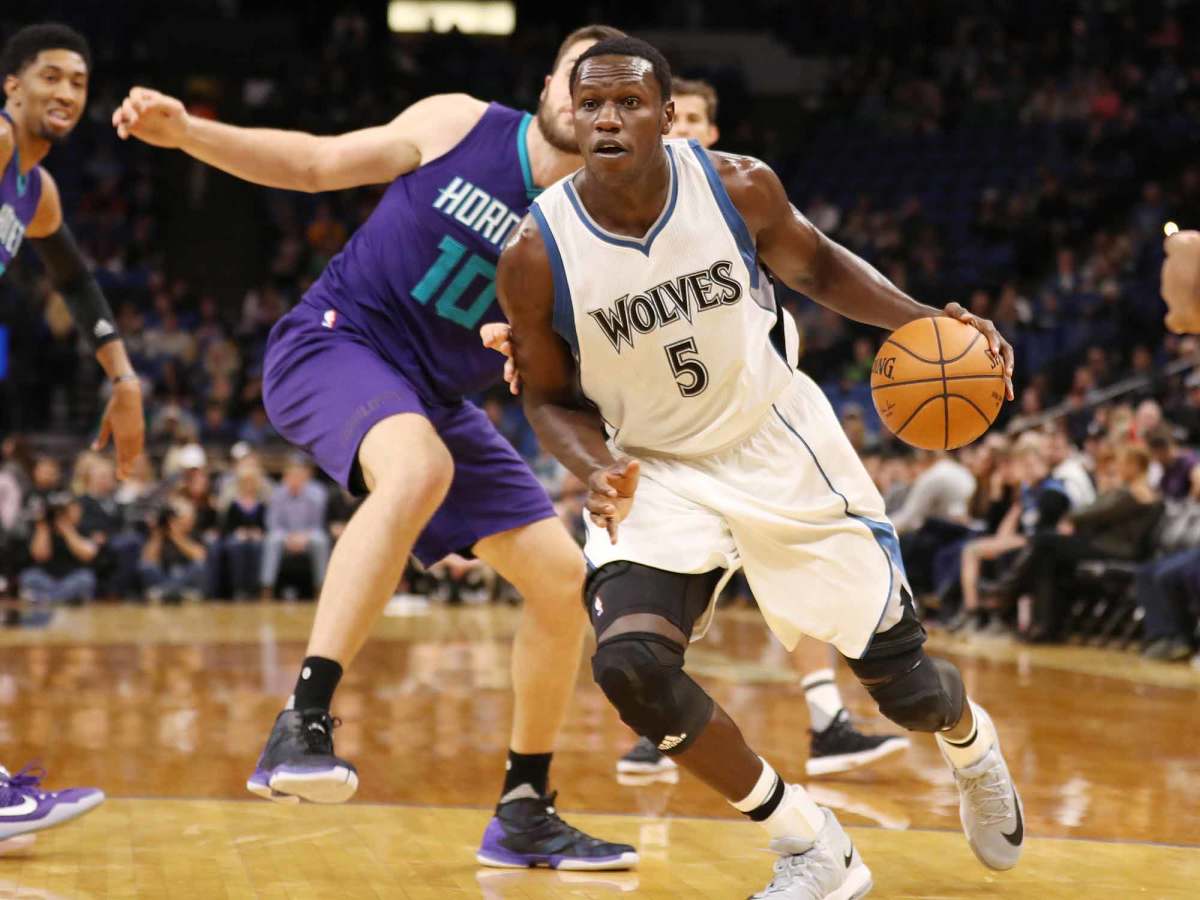
5. Gorgui Dieng, Timberwolves: 4 years, $64 million
Best recent comparison: Larry Sanders’s 4-year, $44 million extension in 2013
There’s a steep drop in name recognition from the four core pieces listed above to Dieng, Minnesota’s relatively anonymous defensive-minded center. Nevertheless, new Timberwolves boss Tom Thibodeau continued his strong if subtle work by locking up Karl-Anthony Towns’s bodyguard. At 26, Dieng is the oldest extension recipient and, as such, is probably closest to his ceiling. More importantly, though, he fits as a traditional interior complement to Towns’s ultra-modern versatility; Thibodeau can play them together in hopes of pounding spread teams and he can rotate them so that at least one of them is always on the court as a backbone. Unlike Nikola Pekovic, Minnesota’s last expensive interior investment, Dieng won’t sop up possessions, he won’t require touches to be helpful on offense, and he won’t be put off if he spends the next five years as a fifth option. He should also have no problem playing more than the 43 games combined that Pekovic has managed since the 2014-15 season opened.
On a proportional basis, Dieng’s contract comes in between 2014 deals for Kenneth Faried (4 years, $50 million) and Tristan Thompson (4 years, $70 million) and virtually identical to the 2013 deal signed by Larry Sanders (4 years, $44 million). That all sounds just right: Dieng can’t quite match Thompson’s defensive mobility and versatility, but he’s more useful and easier to pair with frontcourt players than Faried. And while his positive defensive impact numbers aren’t quite as strong as Sanders’ pre-meltdown work, he will only be asked to fill a role rather than assume the leadership responsibilities that ultimately proved to be too much for Sanders to handle.
• Roundtable: Which NBA star needs a trade the most? The Crossover staff weighs in
6. Cody Zeller, Hornets: 4 years, $56 million
Best recent comparison: Michael Kidd-Gilchrist’s 4-year, $52 million extension in 2015
There isn’t really a great recent positional comparison for Zeller’s deal, as big men with mid-tier offers have generally preferred to roll the dice and wait to be overpaid in restricted free agency. Instead of holding his horses, the 24-year-old Zeller opted for certainty after battling recurring knee problems this summer. On a proportional basis, his deal comes in below 2014 deals for Tristan Thompson, Kenneth Faried and Nikola Vucevic (four years, $53 million) and 2013 deals for Derrick Favors (four years, $49 million) and Larry Sanders, although it does top 2015 deals for Larry Sanders (4 years, $44 million) and John Henson. The closest recent frontcourt comp actually belongs to Zeller’s teammate, Michael Kidd-Gilchrist, who seemingly took a discount last fall after missing significant time due to injury during his first three seasons.
Given that Zeller projects as a long-term starter, thanks to his versatility, mobility and comfort with the ball, this agreement has the potential to look especially team-friendly as it unfolds. Comparable centers might easily sign for 1.5 times as much next summer and a true breakout in an expanded role this year could have pushed his price into cringeworthy territory for Charlotte.
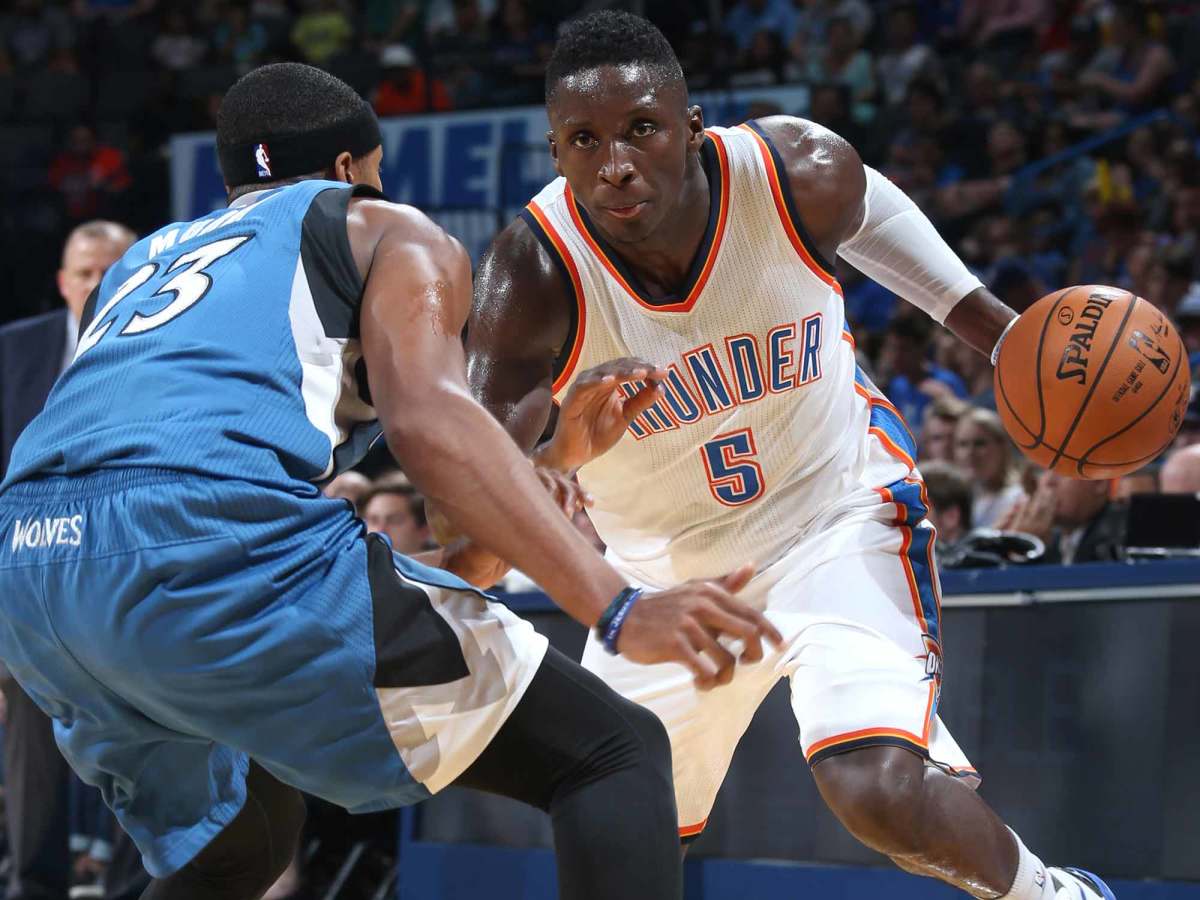
7. Victor Oladipo, Thunder: 4 years, $84 million
Best recent comparison: Ricky Rubio’s 4-year, $56 million extension in 2014
Thunder GM Sam Presti scored two major wins on Monday. First, he avoided giving out backbreaking deals to Adams and Oladipo, both of whom could have commanded far more as top restricted free agents next summer. Second, his new signings, coupled with the recently extended Russell Westbrook, give Oklahoma City a core trio that looks far better on paper from a long-term perspective than the alternate reality in which Presti took care of Adams and then paid market price to retain Serge Ibaka next summer. The real version of the Thunder is younger, cheaper, more explosive and, frankly, more marketable than that hypothetical version.
From an asset retention standpoint, Oladipo’s deal makes sense. At 24, the former No. 2 overall pick is primed for a breakout now that he’s playing alongside a superstar for the first time in his career. From a price standpoint, his deal lines up proportionally with 2013 agreements with Ricky Rubio (4 years, $56 million), Vucevic and Favors, none of which has looked regrettable. The big question, however, is whether the Westbrook/Oladipo pairing will ever be able to overcome its redundancies to truly break through in the West, and whether its wise to commit such a large portion of the cap to two guards in similar molds. In typical Presti fashion, the Thunder have crafted auxiliary paths into the current primary plan: Oladipo can always slide back into a super-sub role if a 3-and-D shooter materializes next summer, or he can transform into a tradeable piece at any point during his new deal given the reasonable price tag. For now, though, let Westbrook and Oladipo’s downhill slaloming commence in full without regard for contract-year anxiety.
8. Dennis Schroder, Hawks: 4 years, $70 million
Best recent comparison: Kemba Walker’s 4-year, $48 million extension in 2014
The “worst” deal of this batch is more accurately described as the “most debatable.” In truth, there wasn’t much to get outraged about in this go-around. It should hardly be surprising that Atlanta reached an agreement with Schroder given that incumbent starting point guard Jeff Teague was traded for a draft pick over the summer. After preemptively striking against both a point guard battle this season and the possibility of paying Teague next summer, the Hawks had every reason to anoint Schroder early and get on with the show.
Atlanta has agreed to pay Schroder roughly the same amount, on a proportional basis, that Kemba Walker (4 years, $48 million) received from Charlotte in 2013. He also comes in a little bit under Minnesota’s 2013 deal with Ricky Rubio. It’s worth noting that Schroder scored his new deal with far less starting experience than Walker and far less name recognition and demonstrated defensive impact than Rubio. On the flip side, though, Schroder will enter a more stable environment: he’s playing for a coach and in a system that he knows, and he’s surrounded by proven veterans who make his life fairly easy. At 23, Schroder has the potential to improve significantly during his extension, like Walker, and he’s so far sidestepped the injury issues that have stunted Rubio’s impact. Schroder will need to take meaningful steps forward to deliver great value on these terms, but the Hawks’ overall plan of going younger and Moneyballing their way out of overpaying Teague next summer looks like a good one for now. True validation won’t come, however, until Paul Millsap makes his free agency decision in July.
